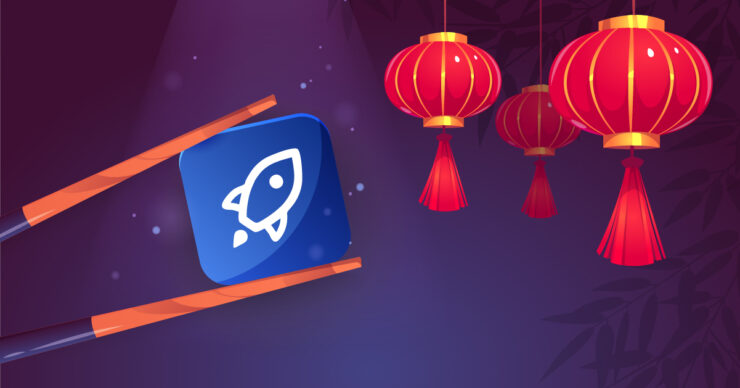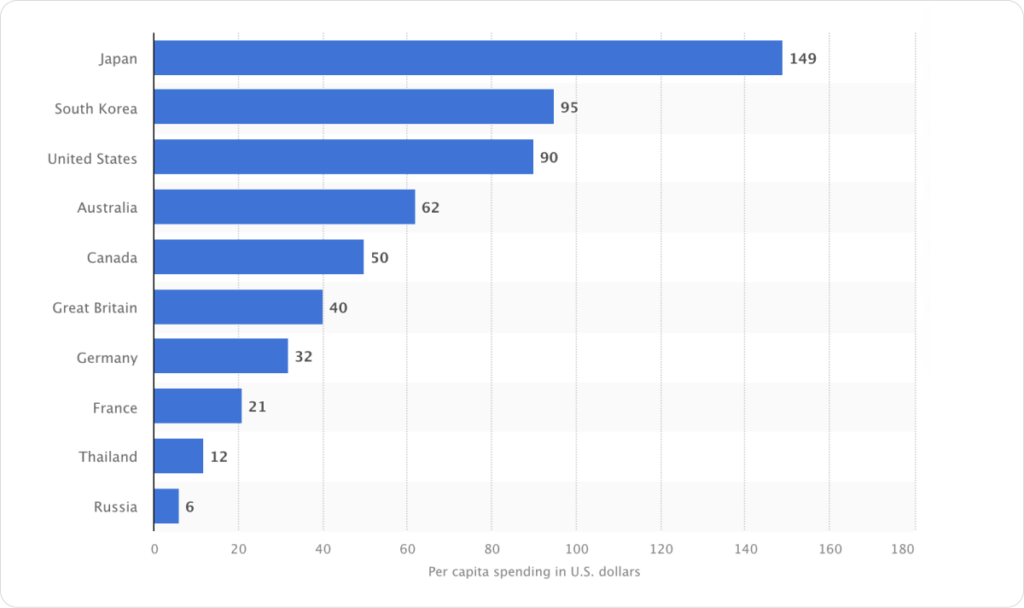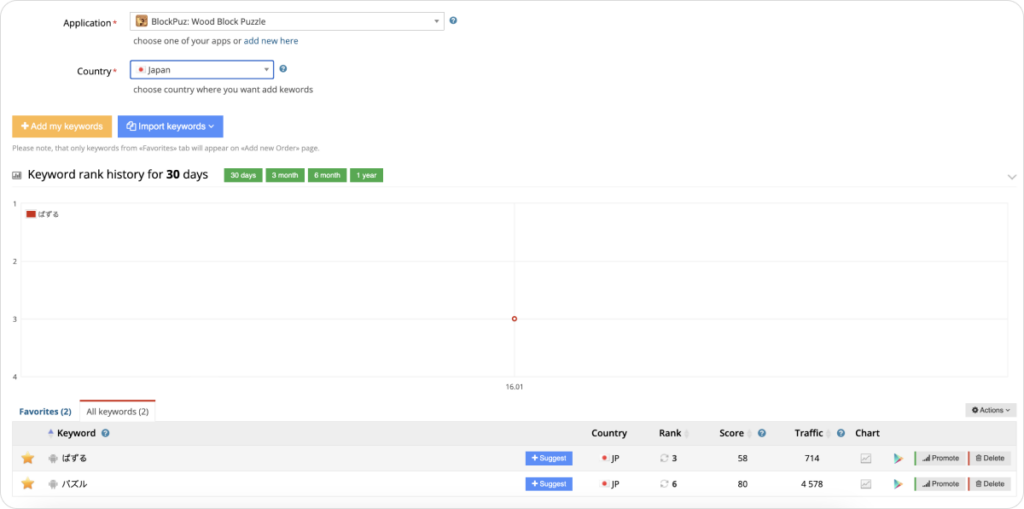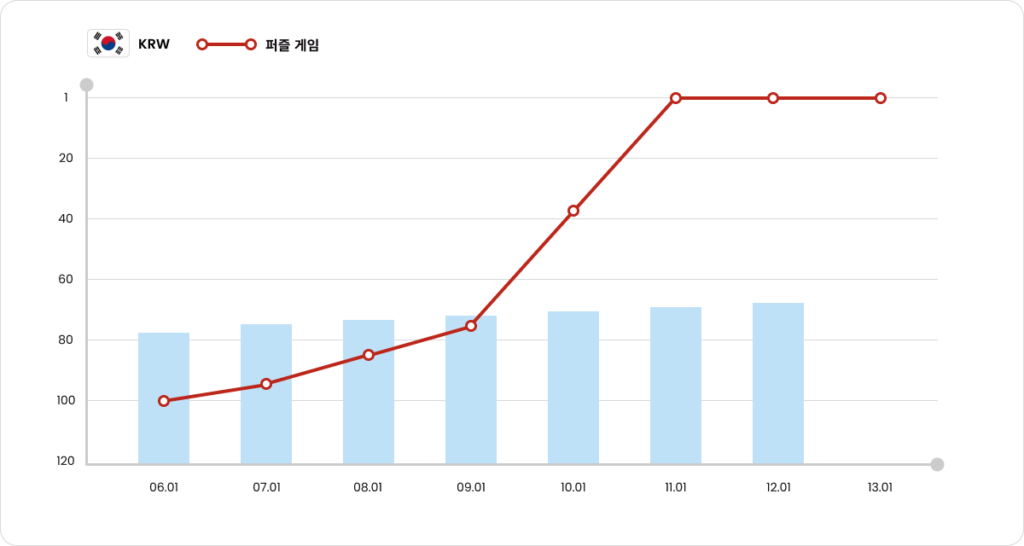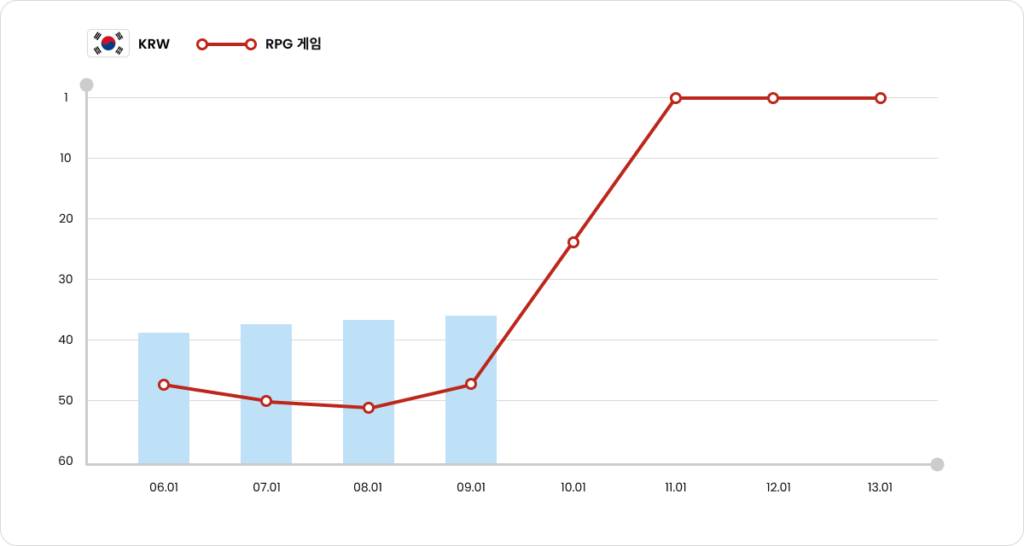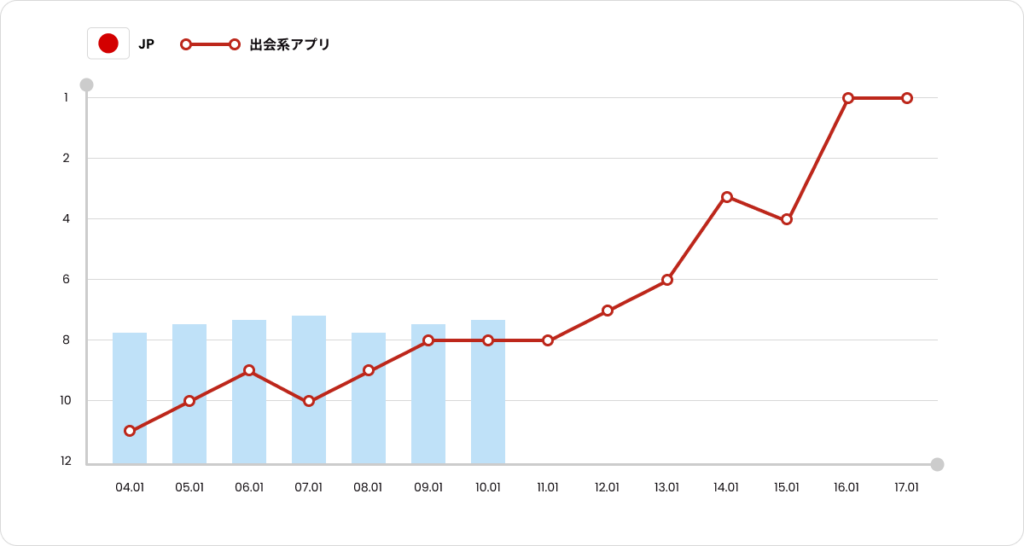- App Store optimization peculiarities and tips for Japan
- Gather both the keywords in Hiragana and Katakana for Japan locale.
- Double-check machine translation with the help of English (your language)-Japanese dictionaries.
- Use the Japanese chronology.
- Pay attention to the meaning of numbers.
- Proceed with visual optimization according to the trends in Japan.
- Localize characters in screenshots.
- App Store optimization peculiarities and tips for South Korea
- In keyword research try to combine both English and Korean keywords.
- Translate your app to Korean
- In screenshots optimization prefer complex and anime creatives rather than minimalist and realistic designs.
- Follow the current Korean trends in icon creation for your app.
Suppose you have already created an application and optimized your app store listing in English, as basically, that is the first step you may do to add the app for the US and European markets. But what is next? In that case, you may start thinking about expanding the app availability and attracting users from other regions, which can also bring your app revenue. And, of course, the regions which can attract your attention are Asian ones. There are a few reasons to optimize your application for such Asian countries as Japan and South Korea:
- according to some reports provided by Sensortower and Statista, Asia still dominates the market and leads them based on year-over-year growth in mobile spending per capita
- such languages as Korean and Japanese are one of the most widely used in the world due to the high amount of native speakers.
Both these factors make to think that the Asian countries and presence there may bring your application a considerable part of revenue. But considering the facts about countries and languages, how to proceed with the App Store Optimization correctly to get the maximum effect? That’s what we will discuss in this article and the main two regions we will talk about are Japan and South Korea as markets that show the fastest increase in the number of active users and their spendings on mobile apps.
App Store optimization peculiarities and tips for Japan
As you may know, the first step you do when starting the App Store Optimization is keyword research. If to talk about some known languages, such as English, it is completely understandable and most ASO specialists and app marketers have already created their own ways to gather the keyword cloud in English or any other European language on their own or with the help of ASO tools. Read how to gather the keywords for your app in our article “How to find keywords for your app”. But how to gather the keywords in a language that you do not speak and do not understand? If to be honest, proceeding with the keyword research for Japan without any basic knowledge of the language is a completely difficult task, but we would like to pay your attention at least to basic facts about Japanese.
There are 4 types of writing in Japanese: hiragana, katakana, hieroglyphs (kanji), and romaji (latin). Therefore, Japanese is considered one of the most difficult languages to learn, which deters many app developers from optimizing the applications for this country. Hiragana and Katakana use syllabic characters which represent distinct sounds, while kanji are more traditional characters that might symbolize abstract concepts, ideas, or something else.
Considering the fact that there are different alphabets, while you check some keywords for popularity and expect that they have high traffic, the situation may be completely different, just because people in Japan use another alphabet to write this word. For any English word, there might be several ways to say the same thing. In the example below, we’ve compared the keyword popularity and estimated daily traffic for two different versions of the keyword “puzzle” in the Japan Google Play. The more popular keyword, “パズル”, is written in Katakana and has higher estimated traffic. The word “ぱずる” is written in Hiragana, and while it is pronounced the same in Japanese, has an entirely different score and estimated traffic. As you may also see, although the meaning and the pronunciation of both variants are the same, the app ranks for these keywords are different, as they are accepted by the store as two separate keywords.
By the way, do not forget that you can check your app ranks for keywords, keyword popularity and estimated daily traffic completely for free in your account in “My Keywords” section.
One more important thing to mention is that the search list for such keywords, which basically mean the same word, but are written in a different way, differs as well. Check the screenshots below showing the search list for both Japanese keywords “puzzle” written in Hiragana and Katakana.
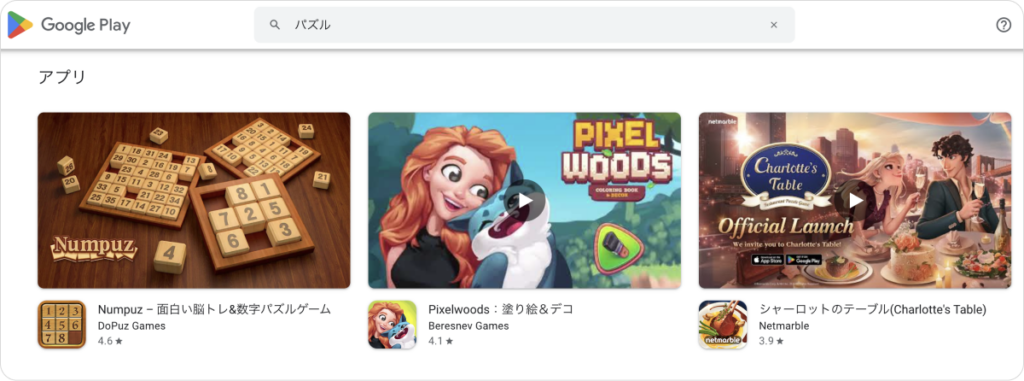
“ぱずる (puzzle)” written in Hiragana

“パズル (puzzle)” written in Katakana
The same is true in the AppStore, so it is possible to assume that by including one version of a word or phrase in your metadata will not necessarily affect how your app ranks for a different version of the word.
Nevertheless, it is important to point out that Japanese users use Hiragana in most cases when they are looking for any app on Google Play or AppStore, but this doesn’t mean that when you gather the keywords on your own, you can forget about Katakana and add only one variant of the word. And taking to the account all the details above, there are the following tips for app store localization in Japan:
1.Gather both the keywords in Hiragana and Katakana for Japan locale.
When you create the keyword research for your app, it is better to gather the search requests in English or your language, then separately in Hiragana and Katakana Japanese. In such a way you will be able to check the keyword popularity for both variants of the word and won’t miss any keyword while creating the text metadata. By the way, metadata fields in the App Store and Google Play for Japan have the same character limits, but more keywords can be put in them due to hieroglyphs and no spaces between them what gives the possibility to use higher number of search requests with the aim to get into the index. For example, if you want to add the keyword “dating” to your metadata, it will take 6 symbols in English and only 2 in Japanese “日付”, so this considerably saves the place when you fill in the keyword field on AppStore.
2.Double-check machine translation with the help of English (your language)-Japanese dictionaries, as Google Translate very often mistranslates into Japanese.
Usually, when you translate any word from your preferred language to Japanese one, and then vice versa the meaning may be different as well as in most cases Google translates the words to Katakana while Hiragana may be preferred by organic users for the search on the stores. For example, for the keyword “drifting” in English Google Translate shows “ふわっと” in Katakana while in Hiragana the keyword is “漂流”.
3.Use the Japanese chronology.
Another point that is often not taken into account when app store localization is that in Japan the chronology goes according to the eras of the emperors reign. Although the Japanese understand the standart chronology we use, for complete localization it is better to take this feature into account.
4.Pay attention to the meaning of numbers.
It is important to avoid embarrassing moments that prevent the application from increasing conversion. It is known that for the Japanese, 4 (“death”), 9 (“suffering”), and 13 (“number of failures”) are unlucky numbers. Make sure that you do not use these numbers in the text or visual optimization, as even such things may influence a lot the amount of organic traffic you get in this country.

Here is a good example of the app icon which, most probably, was created according to the Japanese beliefs in numbers, such figures as 4, 9, and 13 are avoided.
5.Proceed with visual optimization according to the trends in Japan.
Usually, when you create the icon and screenshots for your app, you may try to make them minimalistic and simple to put there only the needed details for the users. But in Japan, people are used to collecting all the information they need in one place. The same may be applied to app screenshots. Do not be afraid to put all the details about the app in the screenshots as well as written information, as minimalism may distrust Japanese users.

Examples of app screenshots for Japan localization
6.Localize characters in screenshots.
When localizing your app screenshots to Japan, it is better to use Japanese models. It makes the app more appealing to users as it makes it feel like the app was made for Japan. By the way, the same may be applied to games when you change your original characters to manga ones, as manga is extremely valued in this country by people of all ages.
Here’s an example of YourCam app optimized for the US and localized for Japan.

App Store optimization peculiarities and tips for South Korea
South Korea occupies the fourth place in the list if to analyze the developers’ revenue. Higher in the list only the US, China and Japan are, so it is completely logical to pay attention to this region in your app localization, as this region may bring the growth to your application.
For localization into Korean, the Seoul dialect is used, as the official language of South Korea. Many ASO specialists believe Korean uses hieroglyphic writing, but this is not true. What seem to be hieroglyphs are letters combined into syllables.
Below are several tips to localize your application for the Korea market:
1.In keyword research try to combine both English and Korean keywords.
As it is known that most Korean people understand English and may use some simple English keywords to find an app. In such a way you will have the full list of keywords and be able to estimate the keyword popularity for your text metadata and promotion. One more tip to follow is to combine both Korean and English keywords in the keyword field on AppStore with the aim to index the app for search requests.
2.Translate your app to Korean.
You need to translate not only the text metadata and words on the screenshots/icon, but the app itself as well. If you want to attract organic users and receive positive rating/reviews, users should see that the application inside is also translated. Remember, that localization is not only about the translation, but also about adapting the app to the needs of the final user.
The same may be applied to the app name. Usually, applications may have English name which prevails in most countries and known by most users. In the case of Korean localization, we would recommend translating the brand name as well, as it is done by Tinder and Uber Eats, for example
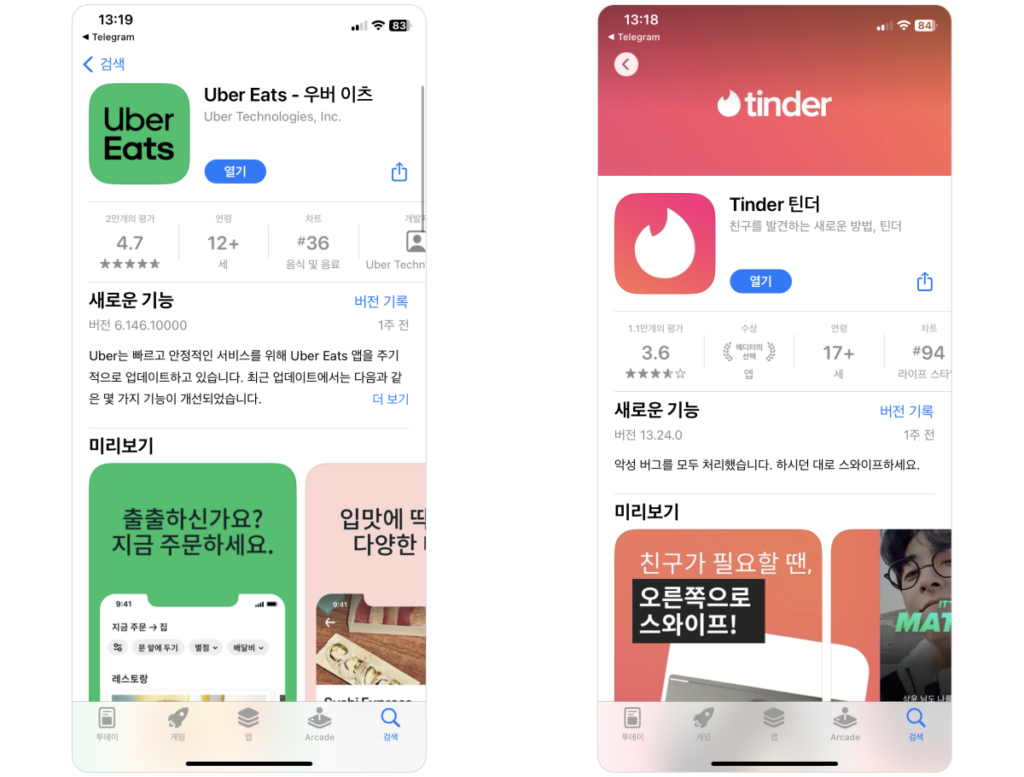
3.In screenshots optimization prefer complex and anime creatives rather than minimalist and realistic designs.
Koreans really value images that have a Korean “feel” to them. For apps, localizing UIs and having Asian models on your creatives make them more appealing to Korean users. As for games, it means having a cute manga and/or anime style called Aegyo that is highly popular in Korea, such as Kawai in Japan. So, having anime elements or Asian models on your creatives makes them more appealing to Korean users.
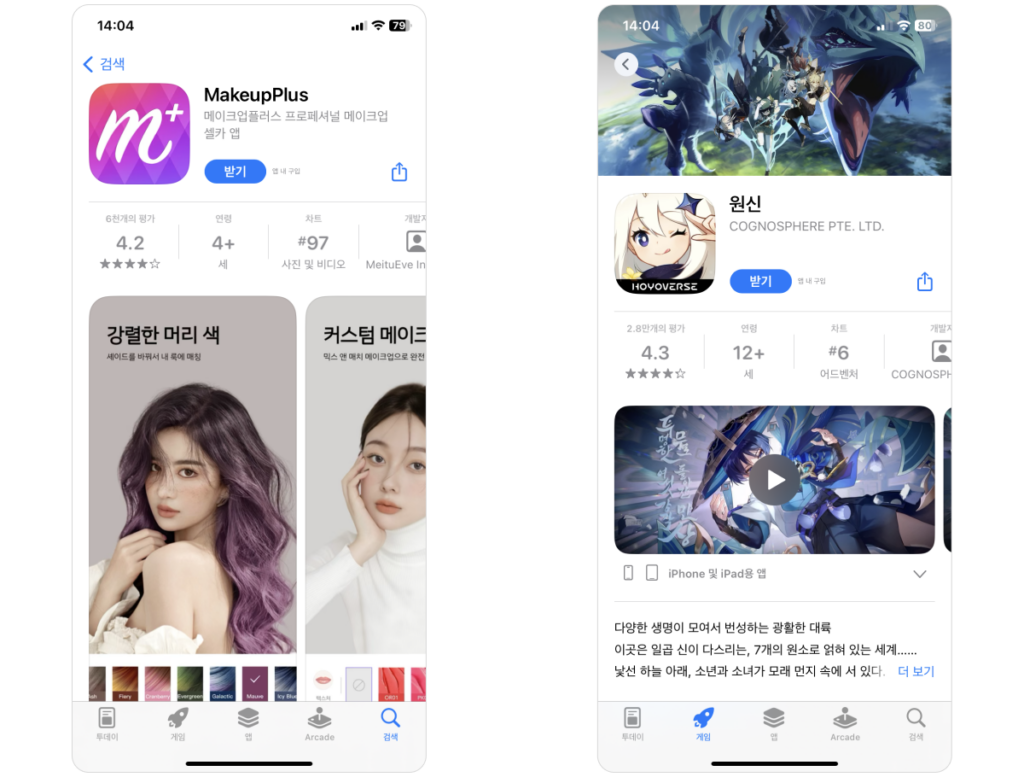
Examples of app visuals localized for Korea
When designing visuals of apps for Korea, it is important to remember the meaning of the colour as well. Some colours have positive meanings, such as white, green/blue, and yellow, whereas others have negative ones, like black and red.
4.Follow the current Korean trends in icon creation for your app.
In gaming applications, the trend is to show a popular hero on the icon; for non-gaming applications, the trend, as in China, is the Brand Name on the icon, but not in its entirety, but, for example, only the first letter, like the local player NAVER with a laconic letter N on the icon.

Case study of keyword promotion for Japan and Korea
As you may see, the Asian market of apps is quite different than the US or European one and it is particularly seen both in text and visual optimization, where other colours and trends are used with the aim to cover the maximum amount of organic users.
At this stage, let’s check some examples of keyword promotion both for Japan and Korea to get which strategies are used as well as how many installs may help to boost the application in these geos. By the way, to get to know how to choose the strategy for keyword app promotion, read the following article.
The first example is for promotion in Korea on Google Play. The keyword promoted is “퍼즐 게임” (“puzzle game”). The promotion was started with the rank 101. Within 7 days we have used 595 installs in total, starting with 70 installs for the 1st day and finishing with 100 installs at the last day of the promotion. Within this period of time we managed to achieve rank 1 for the keyword.
The next example is promotion in Korea as well, but the store is AppStore. The keyword we worked with is “RPG 게임” (“rpg game”). The promotion was started from the rank 50. As the first campaign we set the order for 2 days with 50 and 70 installs accordingly. Checking the results after the campaign we noticed that there is no increase, so decided to set one more order for 2 days with 80 installs daily. This brought and effect and finally we managed to receive top 2 for the search request.
Let’s check some examples for Japan keyword promotion.
The first app we worked with is Android. The keyword we worked with is “出会系アプリ” (“dating apps”). In total we used approximately 500 installs to boost this keyword starting with 50 daily and increasing every day for 20-25%. The starting rank was 11 and after the campaign we managed to achieve the 1st position.
The next example is already for AppStore in Japan. The keyword we promoted is “ドリフトシミュレーター” (“drift simulator”). The promotion was started from the rank 125. We set the order for 3 days with 80 installs daily. As the result we managed to achieve top 5 for the request in 2 days.
As you may see, if to proceed with App Store Optimization in Asia countries correctly following all the recommendations exactly for this market, it is completely possible to get into the index for keywords and to achieve top ranks even for the requests of middle and high popularity. When you are ready to optimize your application for Asia, be sure that you are able not only to translate the texts of metadata and app but ready to localize the application according to the local trends so to make the app popular among the users as well as achieve high conversion rates, rating, and revenue.
Do not hesitate to contact us to get all the trends of ASO and keyword promotion for the regions you plan to work with.

